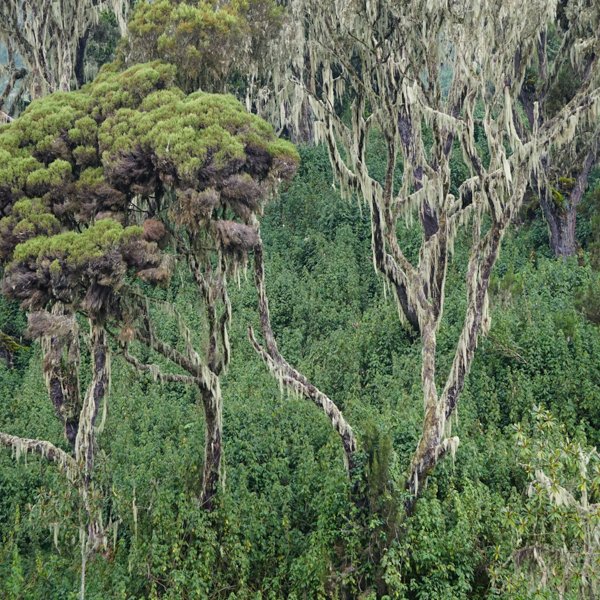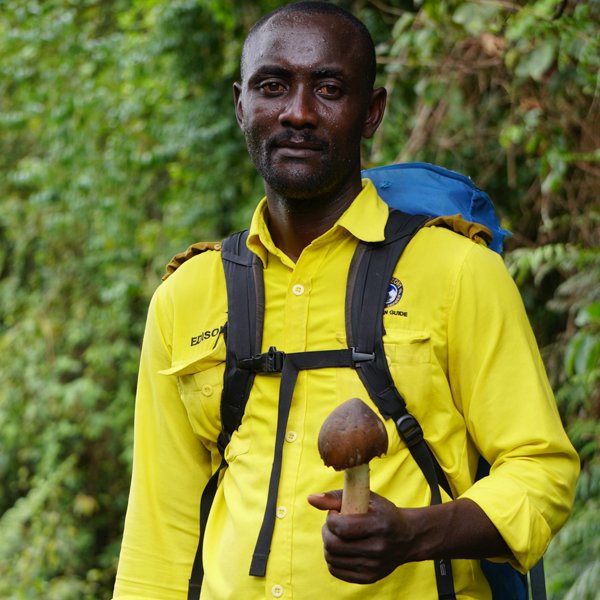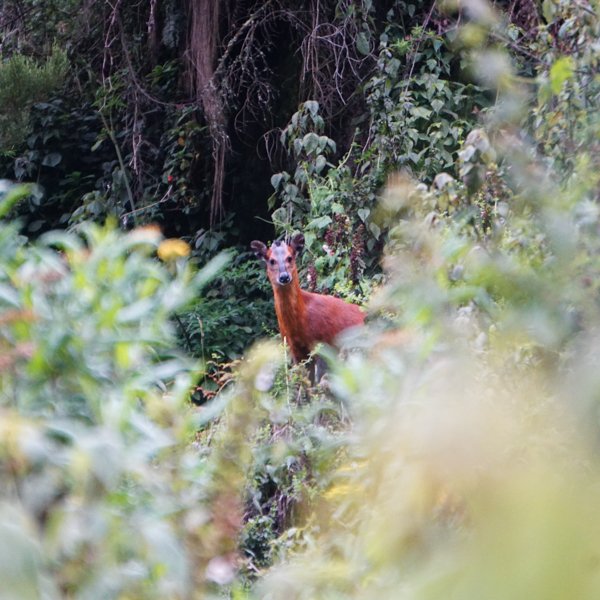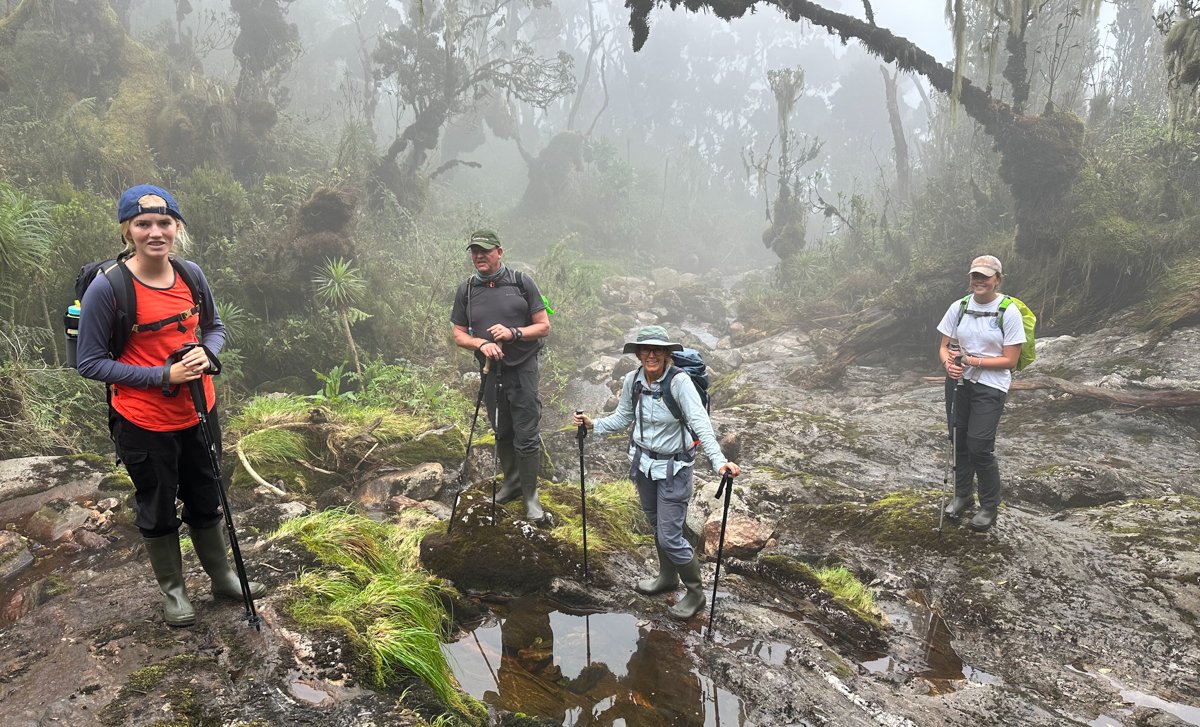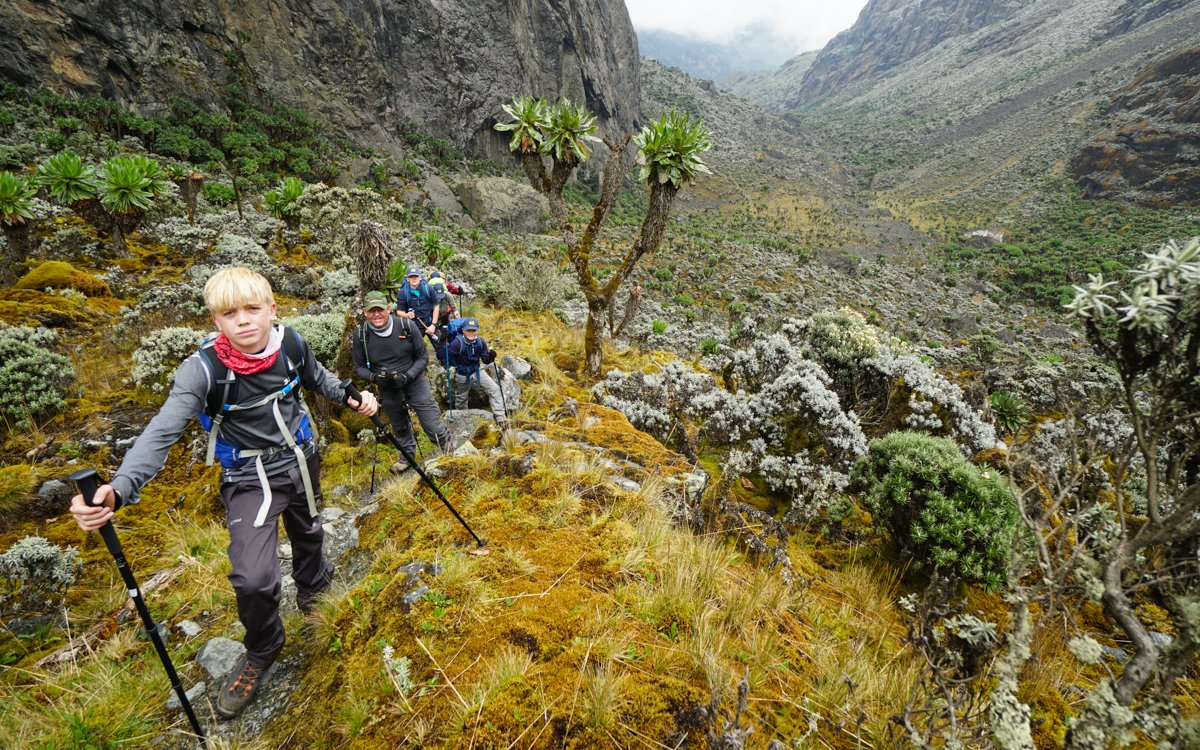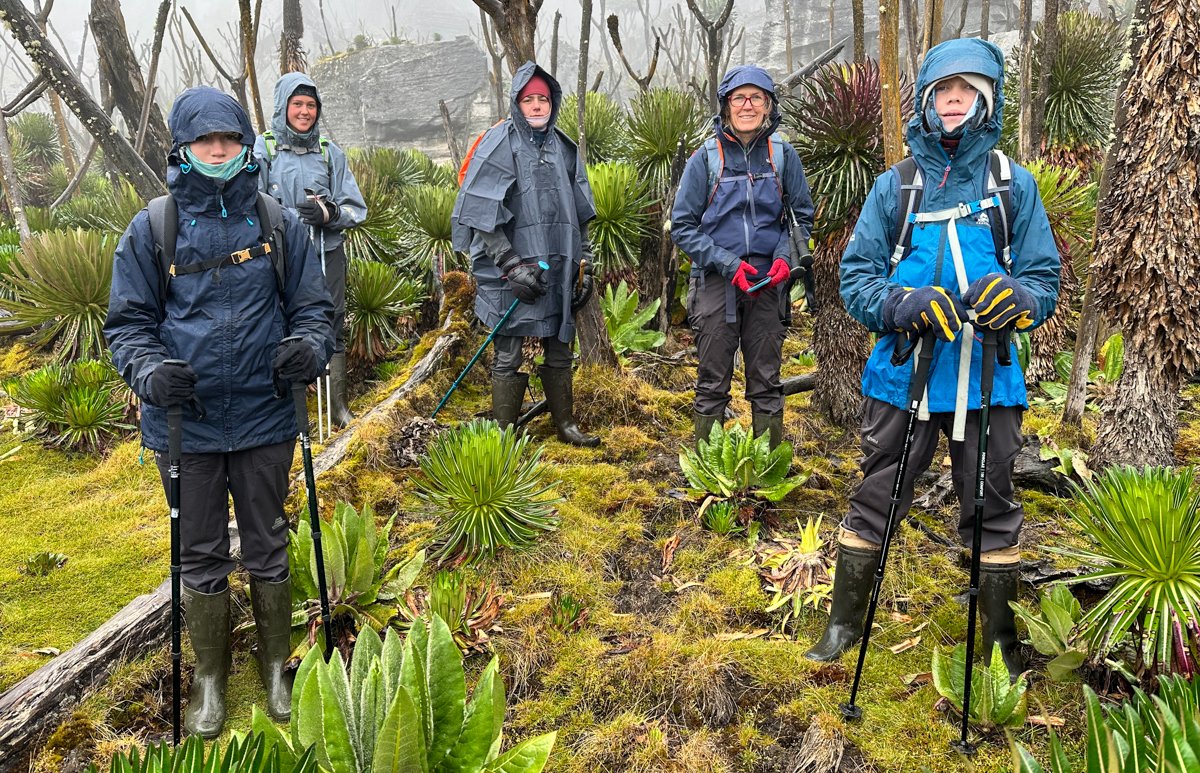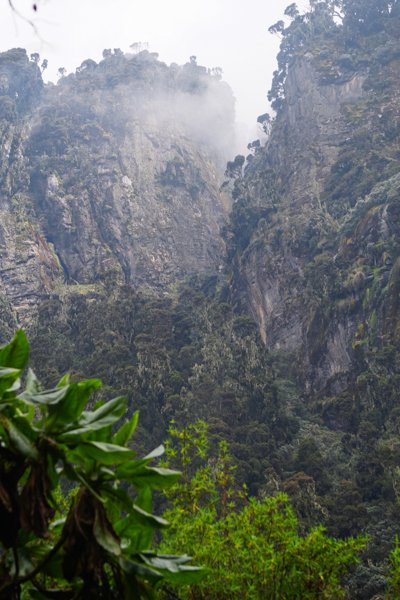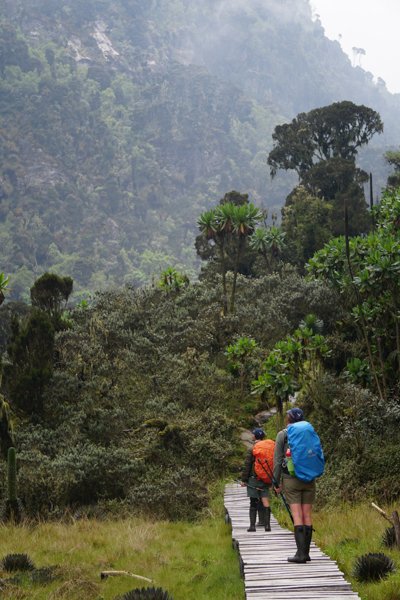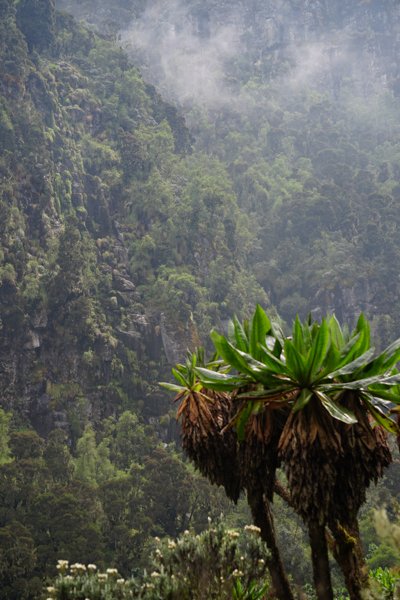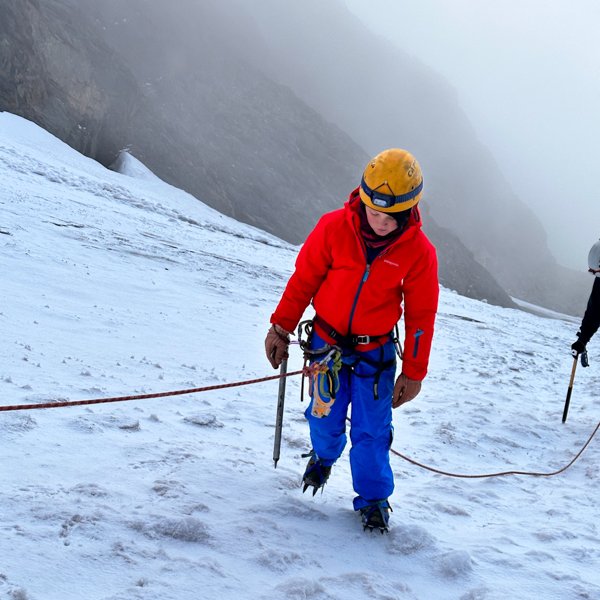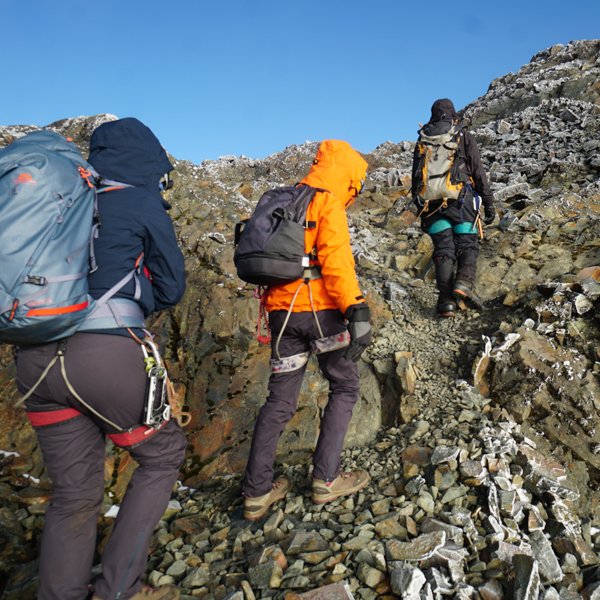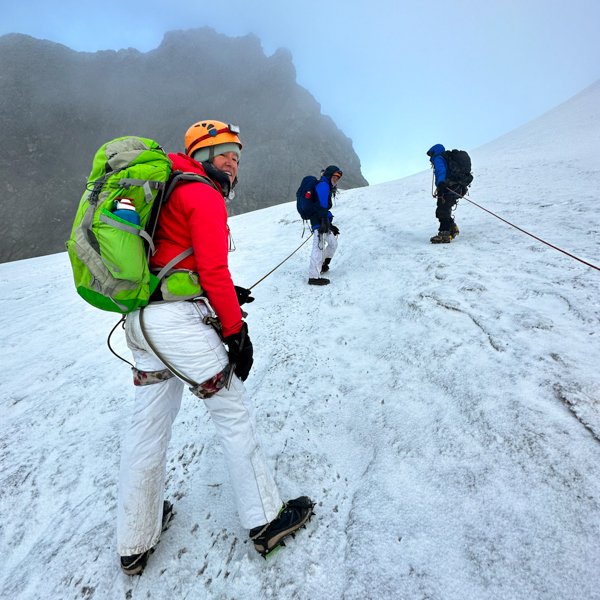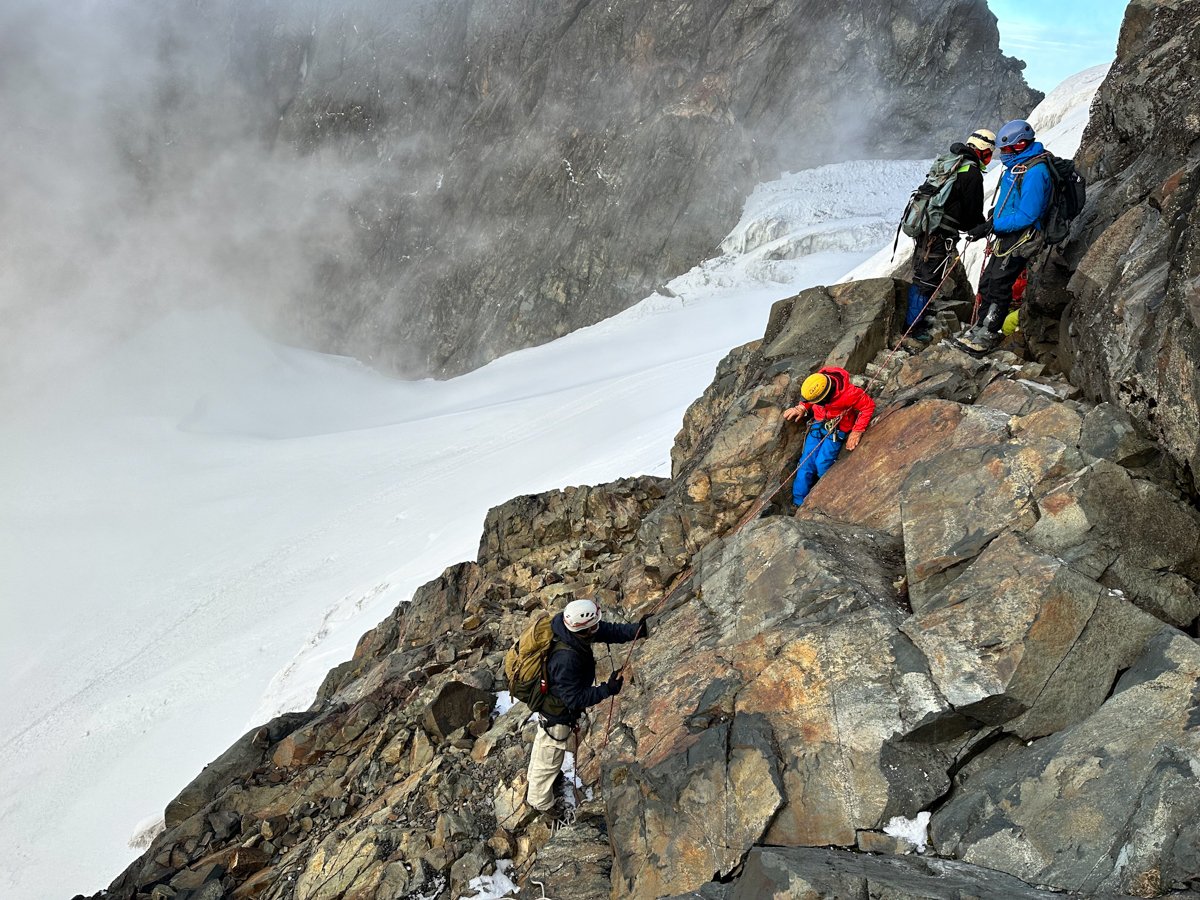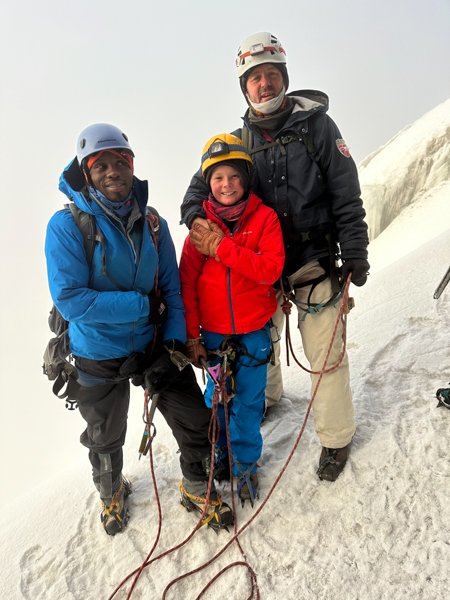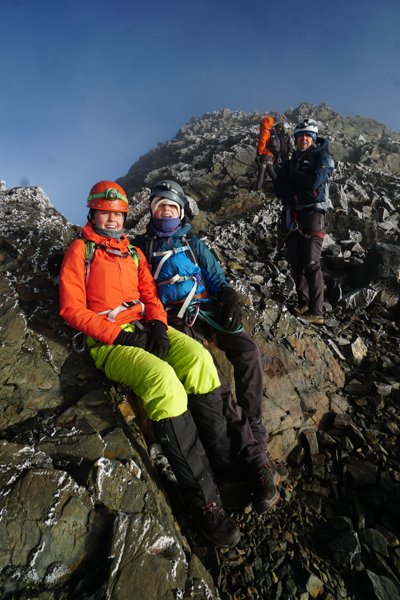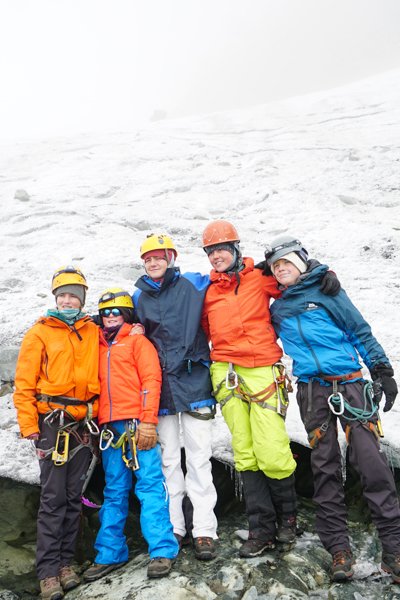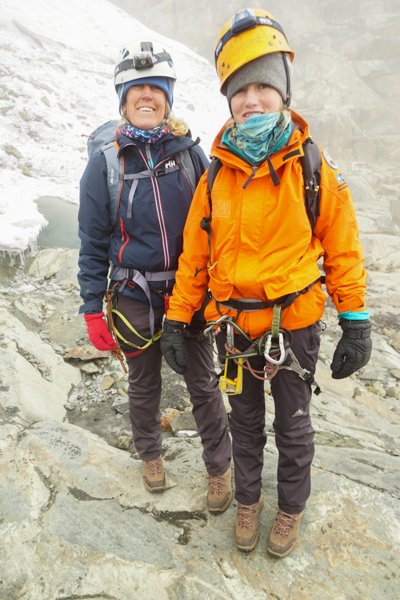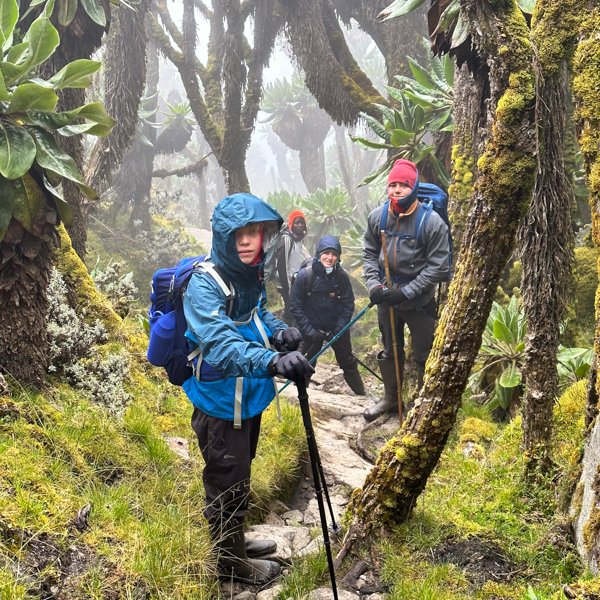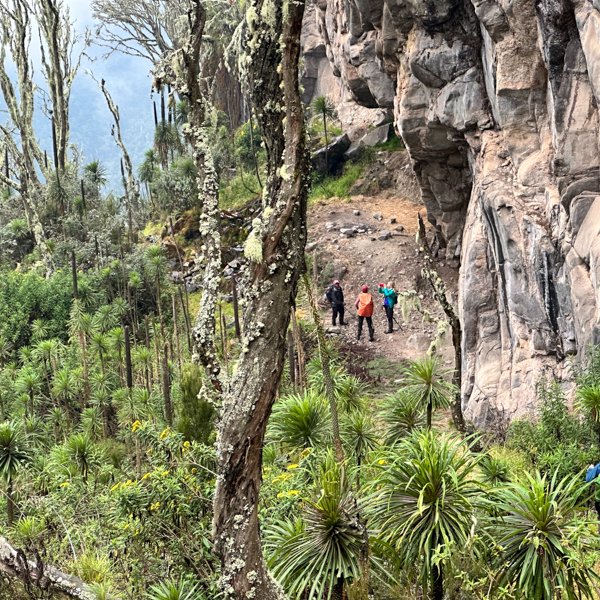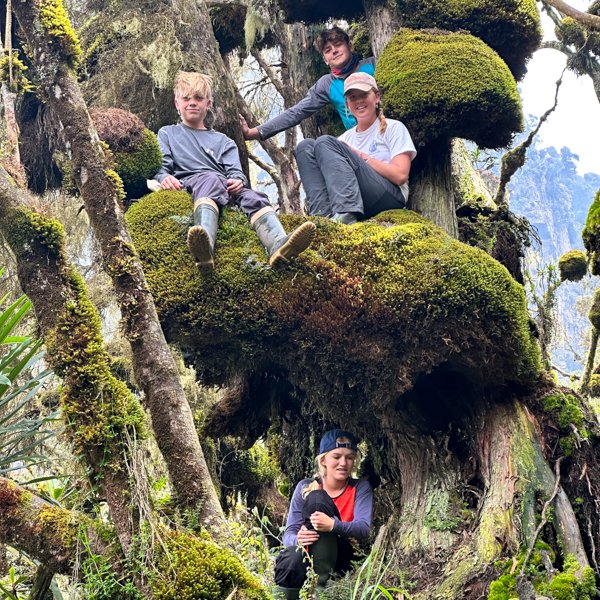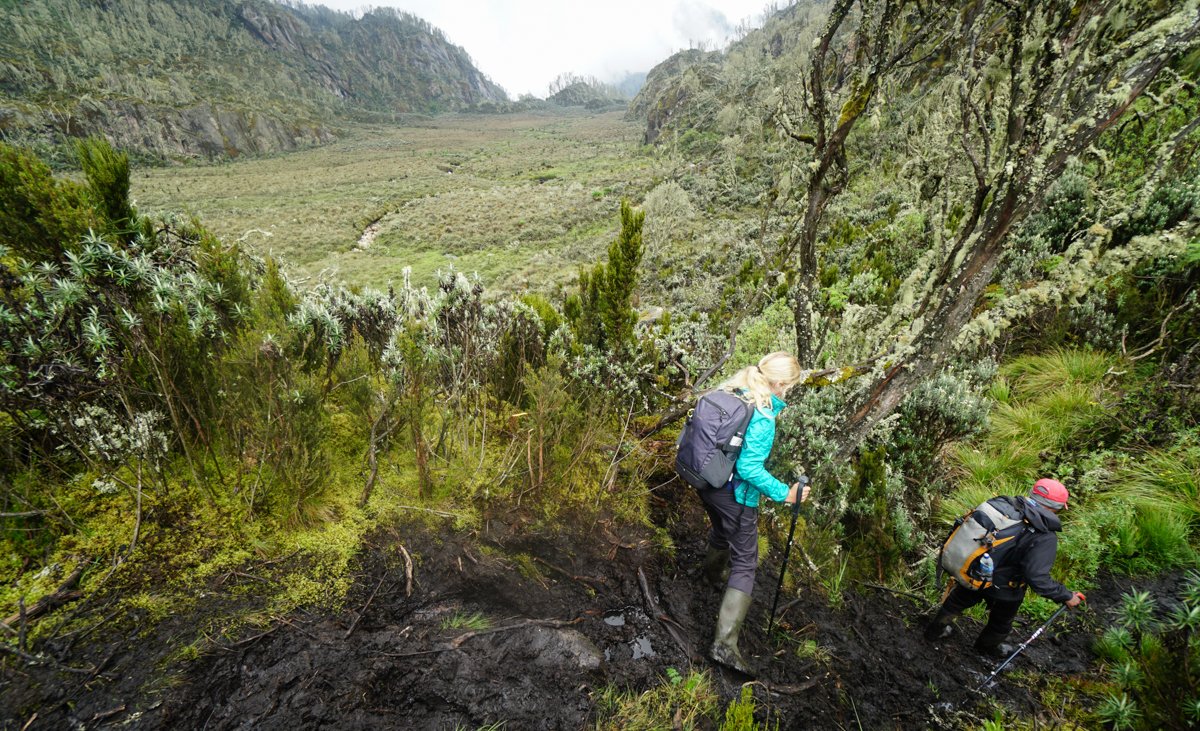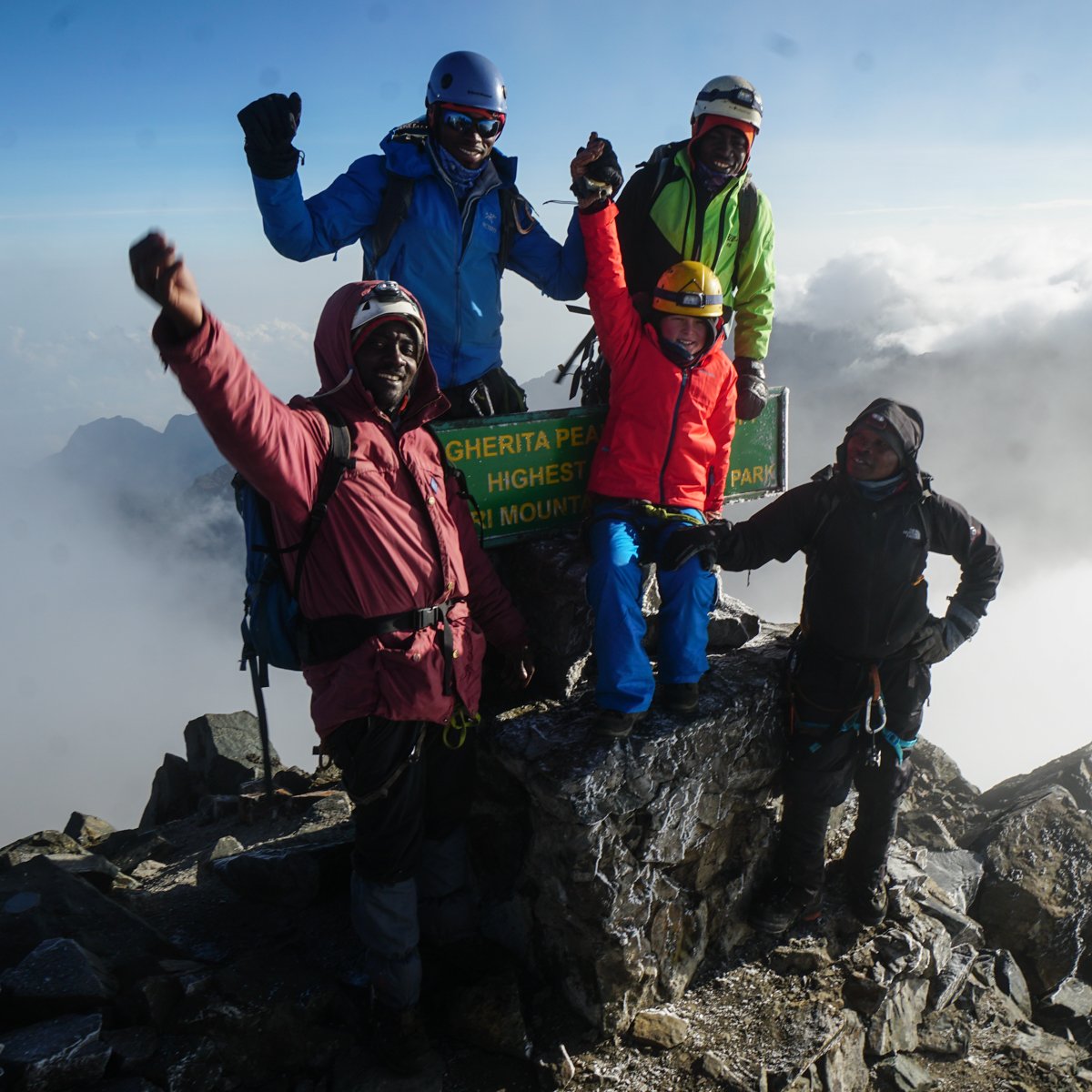A Rwenzori Adventure: Trip report - 8 days trek to Margherita Peak (5,109m). Rwenzori Mountains, Uganda
On our way to the starting point we all admitted to ourselves and each other that we hadn’t done that much research. Our trip to Uganda had been planned in haste amidst the micromanagements of kids' holidays, and none of us really knew what the Rwenzori mountains were all about. I had assumed they would be like other large mountains we had climbed in Kenya—like Mt Kenya, The Aberdares, or Mt Elgon. I was wrong.
Our Kenyan mountains are all volcanoes or at least volcanic and shaped very sensibly as such. The sides are linear, and the views from the heights always give reference to where you are or where you have been.
The Rwenzoris were a different picture altogether. Formed from uplifted granite twice the age of most Kenyan volcanics, it is a proper range rather than a simple up/down peak. To enter the Rwenzoris is to enter a labyrinth of rainforest, rockfalls, precipices, and contorted heathlands. As you progress farther into the range, there grows an awareness of just how deep you are in another world. When we first booked our 8-night trip, we wondered if the number of sleeps were excessive, if we could get away with fewer. We're tough, after all—experienced hikers who live at a bit of altitude and embrace a challenge... Wrong—there is no way we could have completed the trip in less.
We were a party of 10 parents and kids, the youngest, Tiki Harris, at ten, was given special permission to climb on account of an earlier climb of Mt Kenya, a passion for climbing, and a brother (Corey Harris) who became the youngest person ever to summit Batian on Mt Kenya. Corey and the other kids, like our own, were all in the 15/16-year-old category. Was this a responsible endeavor? Were we good parents to embark on such a challenge? Would we all survive?
The forest at the start of the hike rises gently through a stunning forest rich in beautiful and unique, endemic ecology. We tried to stop at everything to get a good look at the sunbirds, the orchids, or the Rwenzori giant earthworm, among others. Moments later, though, the pitch increased and never again for the remainder of the trip would we know such leisurely topography.
Sweat poured off all of us at times like on that first hill, while at other times a cloud-borne cold would creep deep into the bones. A steady and rapid fluctuation between these extremes would initiate constant clothing rethinks.
Our accommodations each night were in a series of huts managed by the operator we used, Rwenzori Trekking Services (RTS). Unlike Mt. Kenya, the Ugandan Wildlife Authority, which runs the parks, has designated exclusive use of a southern route to RTS, who then manage their own huts as well as a very well-maintained trail network.
Each hut brought us higher past different biomes and habitats, including the rainforest mentioned, bamboo, giant heather, and moorlands. After mostly ascending, we then found ourselves descending quite a bit to then regain the lost altitude and arrive at the next hut. This is where the non-linear nature of the Rwenzoris can start to play with your head.
After walking in high moorland for several days, we finally made it to Margherita camp, where we could make our attempt on the peak it is named for (Both Margherita (5,109m) and Alexander are peaks of Mt Stanley or Mount Ngaliema, a vast mountain that also fosters many other minor peaks). Our head guide, Edison, made it very clear how hard it would be. He was supportive but also realistic and transparent and did his best to prepare us for the assault. Uninformed as I was about the entire trip, I had assumed the crampons and ice ax might simply be a bit of a gimmick to make guests feel like mountaineers. Again wrong; they were essential lifesavers.
Roped together in a simo-climbing style, we walked across first the Stanley glacier, then the Margherita glacier. In our hands were our axes, ready to arrest any fall by a member of each line. Did I mention that we were doing all this in the pre-dawn dark? This was not your average, content beer-friendly family vacation. This was the real deal.
There were fixed lines that we could use with a prussic safety running to our harnesses. There were others we would just use for stability and without the prussic for efficiency and timing. Many were covered in ice, adding to a slippery fear of a fall.
Past overhanging walls of ice, we traversed and spun around the mountain to its eastern side, eventually finding a beautiful summit—one minute in cloud, the next revealing the Congo and a tremendous expanse of country below. We had made the top in great time for dawn, and glorious it was to have reached so far. We were a rather motley multi-family team of underprepared people, and some self-pride came over all of us. There were tears on the mountain of struggle and of joy.
After a summit, you tend to think the rest might be a walk in the park. Again, wrong. The summit had taken 6 hours after a 2 am departure. We had another 8 hours of walking to do that day, down to our Margherita camp for a small rest and then onward to the next camp downslope. Summit day was about 14 hours, and exhaustion was palpable, profuse, profane.
Our next consecutive 2 days hiking out of the range were both 9 hours of tricky gumboot descents through boulder-strewn mud and slippery, tricky ladders that dared you to slip. The scenery on this descent though was way beyond anything we might have expected. Kerry’s dad, Rob, who collected specimens in the Rwenzoris in the 1970s, had always said that everything in the mountains was giant. He could not have been more right. Our descent skirted giant boulders the size and shape of ghostly fishing vessels. They had fallen from the heights at a time unknowable, only to allow moss and soil and trees to accumulate on their back like an ark-like scenario. Fresher rockfalls could be seen as well. We at first mistook the holes for elephant or pig scrapes, but then saw that great craters were made by the detonation of a giant rock hitting the soft surface and bouncing on to some other distant place.
Like for so many things that are tough, the elation and emotion we found along the way, and especially at the significantly more steamy bottom, was the greatest feeling of all. To have stumbled ignorantly into such a wonderfully challenging world and then to have survived it was a golden moment for all of us.
James Christian
Tiki Harris the youngest person (10!) to ever reach Point Margherita (5,109m) together with our excellent guides from RTS, Edison, Herbert, Bosco, and Francis . !!


